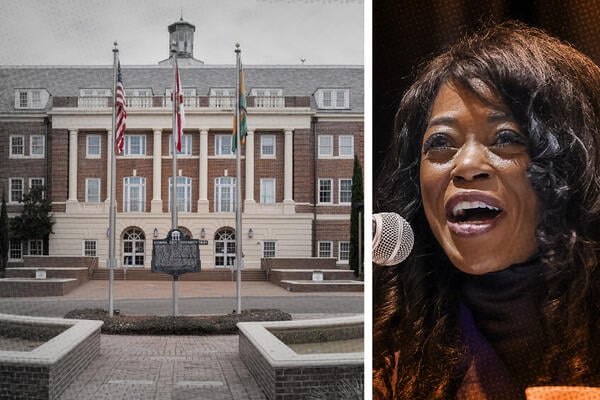Since the public release of ChatGPT in December 2022, educators have faced the challenge of effectively integrating artificial intelligence (AI) into their teaching. Rather than simply acknowledging that students are using AI, we should create opportunities for them to explore practical strategies. This approach will help students better understand and utilize AI as an educational ally, enabling innovative methods for effective classroom integration. The key question is: how can we transform AI from a potential source of plagiarism into a valuable educational resource?
Let’s confront the reality: students are using AI. According to a recent survey by Anthology (2023), 60% of students in the US have used AI tools, with 10% reporting weekly use 38% using them monthly. Instead of fearing AI, we should actively explore its potential in the classroom, emphasizing how it can enrich the learning experience.
Strategic Approaches to AI Integration
One effective strategy is to intentionally redesign classroom activities and assignments to incorporate AI tools. This allows educators to gain insights from students’ interactions with these technologies, fostering a deeper understanding of their applications and promoting ethical use. Here is one example from an AI reflective assignment that I tried out in my classes, followed by some other actionable strategies you may want to try out.
In a junior-level education course, I assigned students the task of writing a reflective paper on the various uses of AI tools, such as ChatGPT, in the classroom. My intent was to encourage them to connect these technologies to broader ethical concerns within our field, particularly around plagiarism, drawing from their experiences as students and their emerging roles as future educators. The goal was to prompt deep reflection on AI’s implications, not just for themselves but for the future of education across disciplines.
To scaffold their analysis, I provided a couple of foundational readings on AI, alongside an article of their choosing, see Roose, 2023 and Gates, 2023 citations. This approach allowed them to contextualize their insights within the landscape of their respective fields, examining the potential benefits and ethical considerations of AI usage, as well as strategies for monitoring its impact and the implications of banning such technologies in educational settings.
Their reflections revealed several critical themes. Students emphasized the importance of creatively integrating AI into the classroom. As educators, we should consider it an enrichment tool rather than a replacement for traditional learning. This aligns with findings from the literature, which emphasize that by intentionally integrating AI-powered learning tools, we can highlight best practices for student engagement with these technologies (Johnson, Adams Becker, & Cummins, 2022). In this context, AI serves as a companion that guides students in their tasks, enhancing their critical thinking and problem-solving skills.
Some students expressed recognition that AI’s presence in education is inevitable; if they did not leverage these tools, their students would likely use them anyway. One student articulated a proactive stance, stating the importance of “find[ing] clever ways to incorporate technology into [student] work.” This highlights a shift in mindset—moving from fear of AI to embracing its potential to enhance learning experiences.
Another key insight was the broader applicability of AI in future classrooms. One student posited that AI could “extend and enrich student learning by assisting in generating ideas, discussion points, and encouraging critical thinking.” This perspective reflects the notion that when properly integrated, technology can serve as a catalyst for deeper engagement and understanding (Cooper, 2023). Moreover, recent recommendations highlight that AI can help personalize learning experiences, catering to individual student needs, and thereby improving educational outcomes (U.S. Department of Education, 2023).
Additionally, several students emphasized the responsibility of educators to prepare students for real-world applications of AI. One student summarized this sentiment powerfully: “If used properly, AI can elevate the education students receive and prepare them for a world where its use will be commonplace.” This statement underscores the urgency of equipping future educators with the skills to integrate AI thoughtfully and ethically into their teaching practices, transforming their practice by utilizing AI in novel ways (García-Peñalvo & Ramos, 2023).
Implications for Faculty
To implement a similar reflective approach in your own courses, consider the following strategies:
- Facilitate Critical Discussions: Begin by assigning readings that frame the conversation around AI and its ethical implications in your particular field. Encourage students to select supplemental articles relevant to their fields to foster interdisciplinary connections, allowing for both autonomy and current insights in the field. AI is so new that the landscape of our knowledge is changing constantly.
- Encourage Reflective Writing: Ask students to write reflective papers that analyze the impact of AI tools on their discipline. Prompt them to explore both benefits and ethical considerations, allowing for a nuanced understanding of the topic.
- Create Collaborative Learning Opportunities: Consider group projects where students can share their insights and strategies for incorporating AI. This can lead to a richer dialogue and diverse perspectives on AI integration.
- Highlight Real-World Applications: Emphasize the relevance of AI skills in their future careers. Discuss potential scenarios where they might utilize AI in the university classroom, preparing them for the challenges and opportunities ahead.
By focusing on these strategies, faculty can engage students in meaningful exploration of AI, ensuring they are not just consumers of technology, but critical thinkers prepared for a rapidly evolving educational landscape. Further, by centering our teaching practices on critical engagement with AI, we can better prepare our students for a future where these tools are integral to learning and teaching.
Final Reflections
A quote by Soren Kierkegaard resonates deeply in the context of adopting AI in education:
“To be a teacher in the right sense is to be a learner. Instruction begins when you, the teacher, learn from the learner, put yourself in their place so that you may understand what they understand and the way they understand it.”
This perspective highlights the reciprocal nature of learning. By embracing AI, educators can better understand and support their students. Understanding how students interact with AI tools allows teachers to guide ethical usage, ensuring that both educators and learners benefit from these technologies. By stepping into our students’ shoes, we can enhance learning, promote critical thinking, and address ethical concerns through thoughtful integration of AI in our classrooms.
Note: this article used collaboration between the human author and the AI program ChatGPT.
Lisa Delgado Brown, PhD, is a current Assistant Professor of Education at The University of Tampa and the former Middle/Secondary Program Administrator at Saint Leo University where she also served on the Academic Standards Committee. Dr. Delgado Brown teaches literacy courses with a focus on differentiation in the general education classroom.
References
Anthology. (2023). AI in Higher Ed: Hype, Harm, or Help [Whitepaper] Anthology. https://www.anthology.com/sites/default/files/2023-11/White%20Paper-USA-AI%20in%20Higher%20Ed-Hype%20Harm%20or%20Help-v1_11-23.pdf
Cooper, G. (2023). Examining science education in ChatGPT: An exploratory study of generative artificial intelligence. Journal of Science Education and Technology, 32(4), 444–452. https://doi.org/10.1007/s10956-023-10039-y
García-Peñalvo, F. J., Lorens-Largeo, F., & Vidal, J. (2023). The new reality of education in the face of advances in generative artificial intelligence. RIED-Revista Iberoamericana de Educación a Distancia, 27(1), 1–15. https://doi.org/10.5944/ried.27.1.37716 (translation accessed at: https://www.redalyc.org/journal/3314/331475280002/html/ )
Gates, B. (2023, March 21). The Age of AI has Begun. GatesNotes. https://www.gatesnotes.com/The-Age-of-AI-Has-Begun
Johnson, L., Adams Becker, S., & Cummins, M. (2022). Technology outlook for higher education 2022–2027. EDUCAUSE. https://library.educause.edu/-/media/files/library/2022/4/2022hrteachinglearning.pdf?#page=40
U.S. Department of Education. (2023). AI and the future of learning: Insights and recommendations. https://www.ed.gov/sites/ed/files/documents/ai-report/ai-report.pdf
Roose, K. (2023, January 12). Don’t Ban ChatGPT in Schools. Teach With It. The New York Times. https://www.straitstimes.com/tech/tech-news/don-t-ban-chatgpt-in-schools-but-teach-with-it




